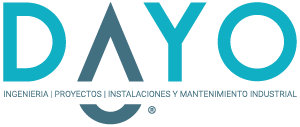RECYCLING WATER FROM THE BOTTLE WASHING PROCESS OF THE INDUSTRY FOOD AND DRINKS
Applications
It is applied in washing processes with caustic or highly alkaline detergent, it is done in these types of industries:
- Natural juices, carbonated drinks, wine and cava, mineral water, beer and malt, cider, etc …;
- In addition to this application, it can also be used in mercerization processes in the textile and electrolytic industries. In CIP (Clean In Place) solutions, especially in the dairy, pharmaceutical and cosmetic industries.
Characteristics of bottle wash discharges
The water produced in this industry has the following characteristics:
- High content with a very high alkaline pH, in concentrations of 1.5 to 3.5%;
- Presence of dissolved or emulsified oils or fats;
- High working temperatures 75-85 ° C;
- Alkaline soluble organic matter;
- High suspended solids content to eliminate glues and labels;
- The content of chelating agents and detergents, added in different proportions depending on the wash.
Processes applied in recycling
Depending on the degree of recycling, the following techniques apply:
- Classification for the separation of labels, and other fibers or waste, over 1mm in size;
- Ultrafiltration with ceramic membranes up to 300 KD for clarification and retention of organic matter with high molecular weight;
- Nanofiltration with organic membranes for the retention of lower molecular weight organic matter;
- Ultrafiltration and nanofiltration techniques can be used to form individually or together, depending on quality requirements.
Process description
- The screening allows the separation of all types of suspended solids, present in water, up to a size of 1mm;
- Ultrafiltration is a physical separation process through the application of membrane technology, in this case ceramic. It works at a pressure of 2.5 – 3 kg / cm2 and allows a high degree of clarification;
- Nanofiltration is identical to the previous process, but with organic membranes that allow greater clarification and elimination of soluble organic matter, with a working pressure of 7-20 bars, depending on the existing sodium concentrations;
- The wastes from these processes are taken to the wastewater treatment plant. In the case of UF it is of the order of 1-3% and in the case of nanofiltration 10-15%.
Benefits of recycling
- It can recycle 90% of the fluid that circulates;
- Production does not stop, because the process is continuous;
- Energy saving, since heat losses are minimal, when heating the new liquid;
- Economization of chemicals;
- Sanitize the solution that is in circulation;
- Avoid subsequent neutralizations in the treatment station, saving acid and salt formation;
- The production of concentrates is minimal, and they can be recycled as neutralizers in the treatment plant.
Conclusions
The recycling of wash water maintains the environment because:
- Reduce the consumption of water from the network;
- Save thermal energy;
- Reduces operating and maintenance costs;
- 24/24 service guarantee;
- Save chemicals.




